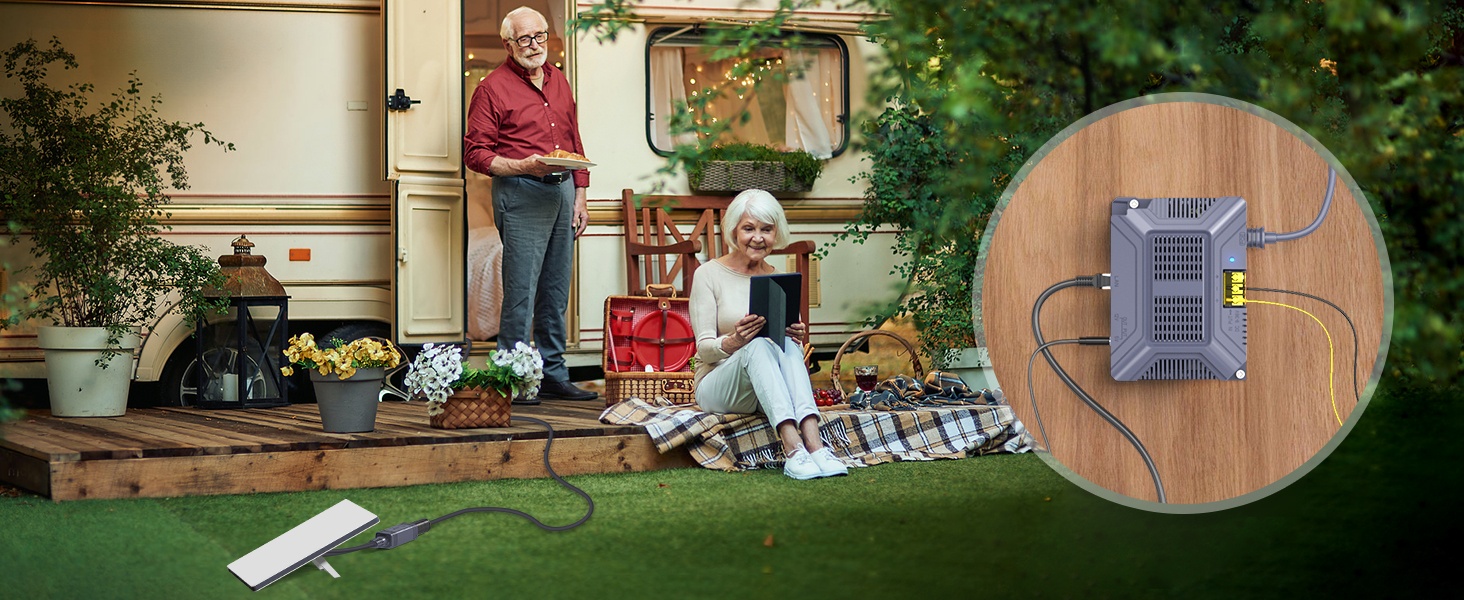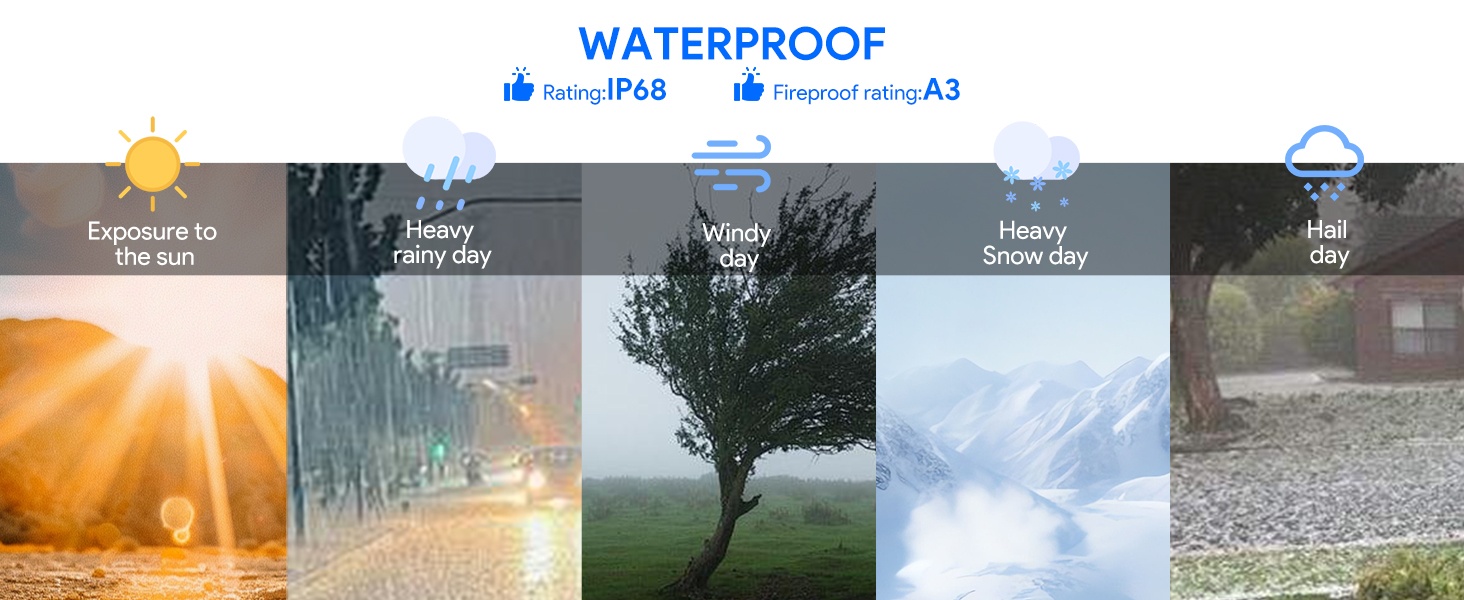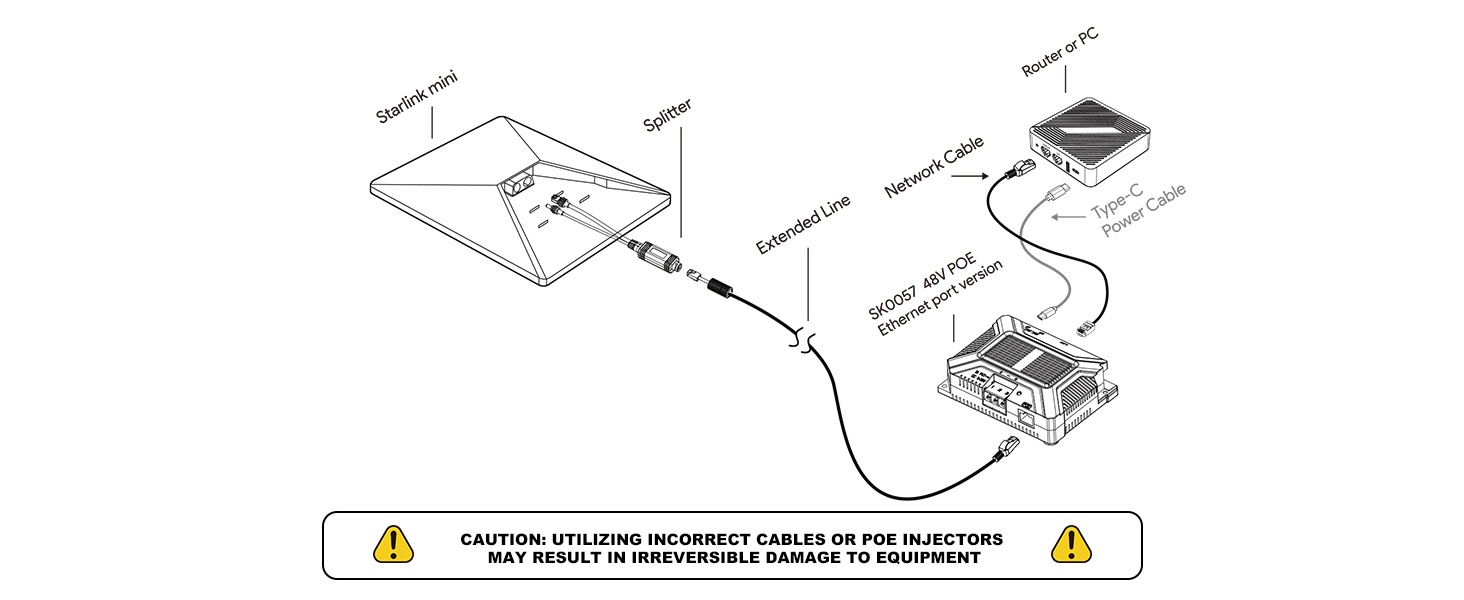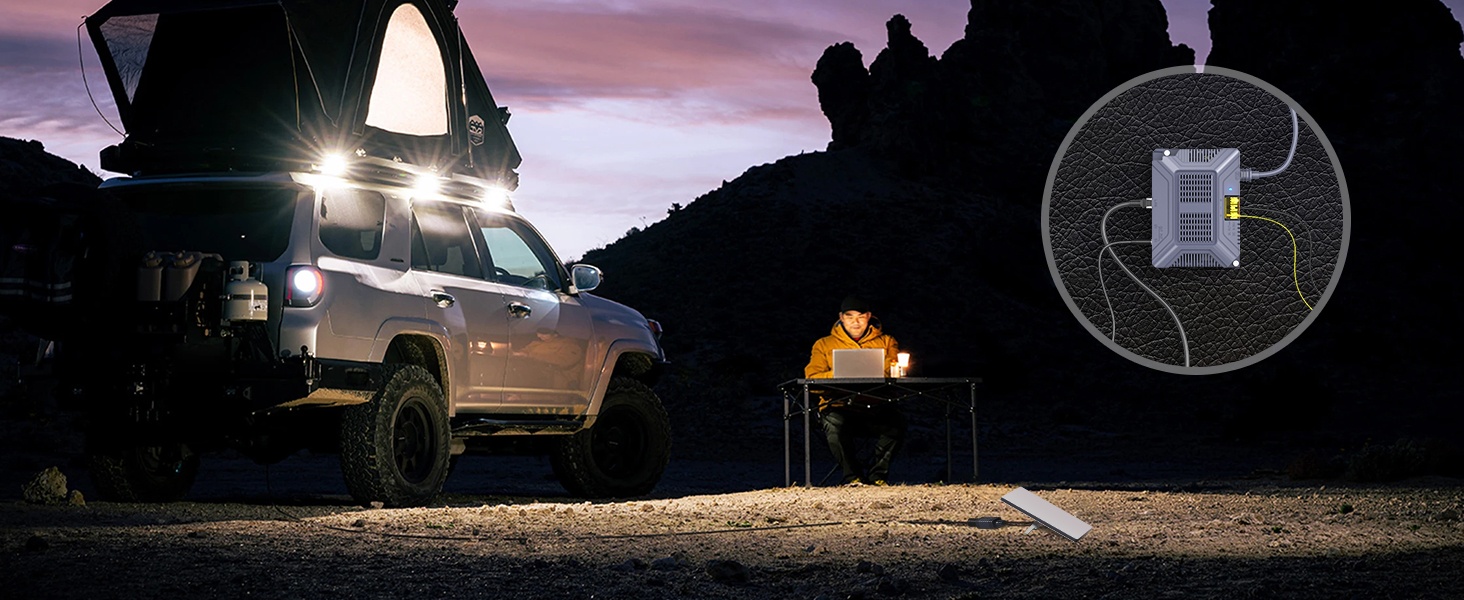Starlink Mini PoE Splitter: A New One-Cable Power and Data Solution
Starlink Mini PoE Splitter: A New One-Cable Power and Data Solution
Recently, the well-known Starlink tech YouTuber DISHYtech released a video titled “Starlink Mini PoE (Power Over Ethernet) Modification”, showcasing how to use a PoE splitter to power and connect the Starlink Mini satellite dish using a single Ethernet cable. In the video, the creator connects a 48V power adapter to a PoE injector, then uses one Ethernet cable to connect the injector to a PoE splitter, and finally plugs the splitter’s outputs into the Starlink Mini’s round DC power port and Ethernet port. This setup allows the Mini to receive both power and data over a single cable, eliminating the need for separate power wiring.

Installation & Usage
As shown in the video, the setup process is straightforward: prepare a compatible PoE injector and PoE splitter, plus a weatherproof Ethernet cable. Once the PoE injector is powered on, the user connects its PoE port to the splitter using a 100-foot cable. The splitter’s power output and data output are then connected to the Starlink Mini’s round power and Ethernet ports. The Mini powers on successfully, and the user can access the backend via wired internet.
The featured splitter includes waterproof sealing rings, making it suitable for outdoor use. However, the host notes that thicker outdoor cable jackets may require trimming the soft pull tab to fit through the sealing nut.
https://www.youtube.com/watch?v=5eIZM4hkrlg
Presenter Style & Expert Advice
DISHYtech’s presenting style is professional, clear, and approachable. He emphasizes that users must choose PoE++ (802.3bt) standard injectors because the Starlink Mini can draw over 50W at startup — which exceeds the 30W limit of standard PoE+ injectors. The video and Reddit discussions recommend using high-power injectors or switches capable of 60W or more (e.g., 48V/60W).
The host also clarifies that the Mini does not have a USB port — it uses a DC barrel jack for power and supports a wide voltage range from 18V to 60V DC. Therefore, the output voltage of the PoE splitter must match Starlink Mini’s requirements. In the demo, he uses a 48V setup to ensure stability and reduce voltage loss across long cables.

User Experience & Compatibility Notes
User feedback featured in the video and comments shows that the PoE splitter greatly improves flexibility. For example, one user compares speeds before and after installation: using the Mini’s built-in Wi-Fi in a van yielded only ~20 Mbps download, while wired connection via the PoE splitter reached 150 Mbps. He also highlighted how the splitter worked perfectly with his 12V-to-48V power booster, making setup easy and customizable for different cable lengths.
This solution is designed specifically for the Starlink Mini, which has separate DC and Ethernet ports. Other Starlink models like Gen2 or Gen3 already use integrated PoE and don’t require a splitter. Users must ensure the voltage and current of the PoE splitter are suitable — for example, using 30V with 2A current gives 60W power and supports longer cable runs (up to 50 feet). Higher voltages like 48V are recommended to reduce power loss over distance.

Ideal for Mobile and Remote Users
This PoE splitter solution is ideal for RV owners, campers, boats, or off-grid setups, where running a single cable simplifies installation and ensures network stability. One Amazon reviewer mentioned being “blown away” by the speed jump from 20 Mbps to 150 Mbps after switching to a wired connection using the splitter.
The Starlink community has responded enthusiastically. On forums like Reddit, users discuss choosing the right injectors, calculating cable distances, and ensuring compatibility. Many recommend using 65–100W PoE++ hardware, weatherproof outdoor enclosures, and 14–16 AWG thick cables to minimize voltage drop. The shared knowledge helps users avoid underpowering the device and achieve optimal performance.

Conclusion
This detailed tutorial and community feedback show that PoE splitters for Starlink Mini can greatly enhance mobility, simplify installation, and improve performance. It’s a compelling solution for power users looking to get the most out of their Starlink satellite internet system.
Sources: DISHYtech YouTube channel, Reddit user discussions, Amazon reviews.
Publish Your Reviews
Be the first to receive exclusive discounts and news








